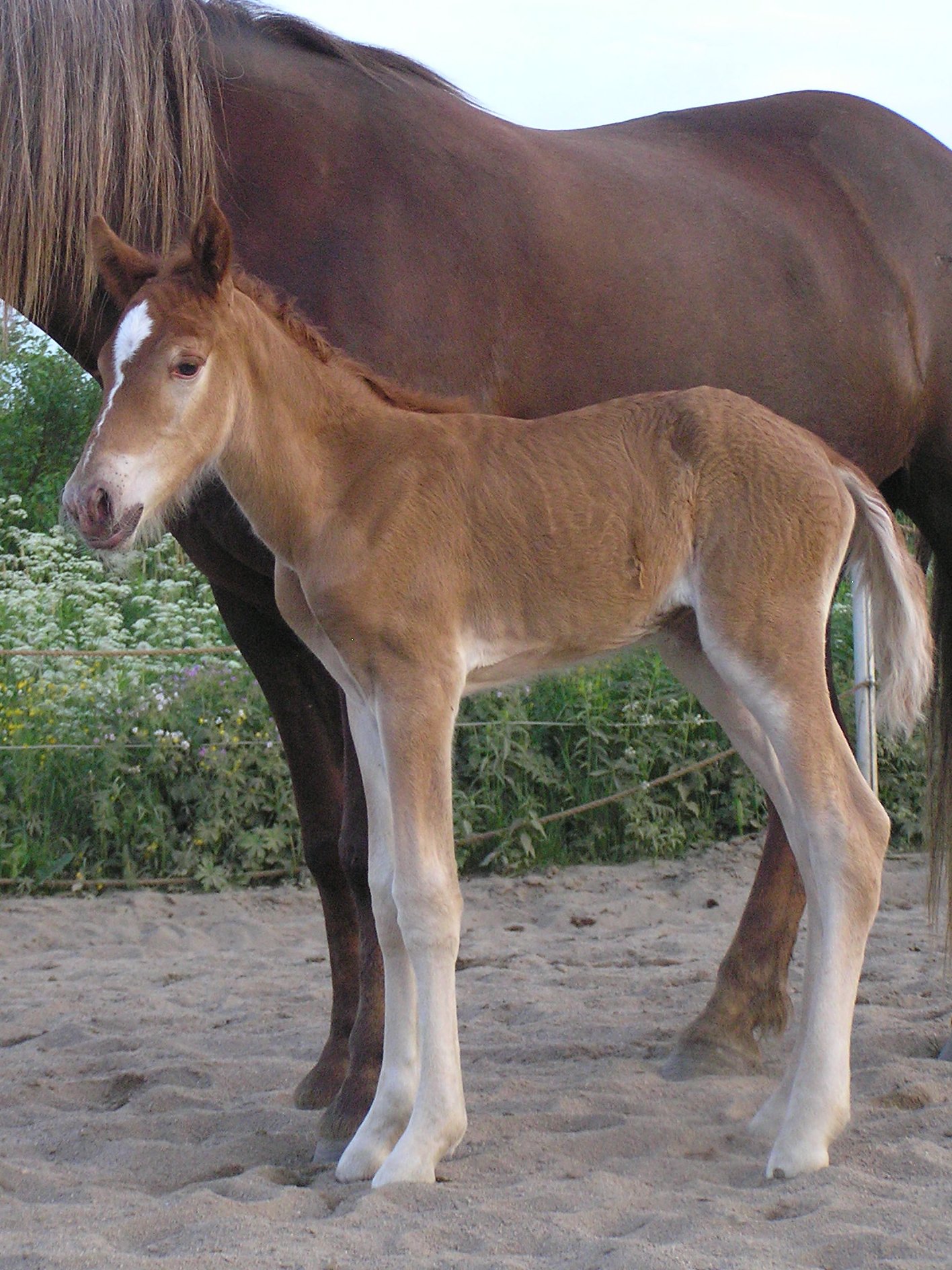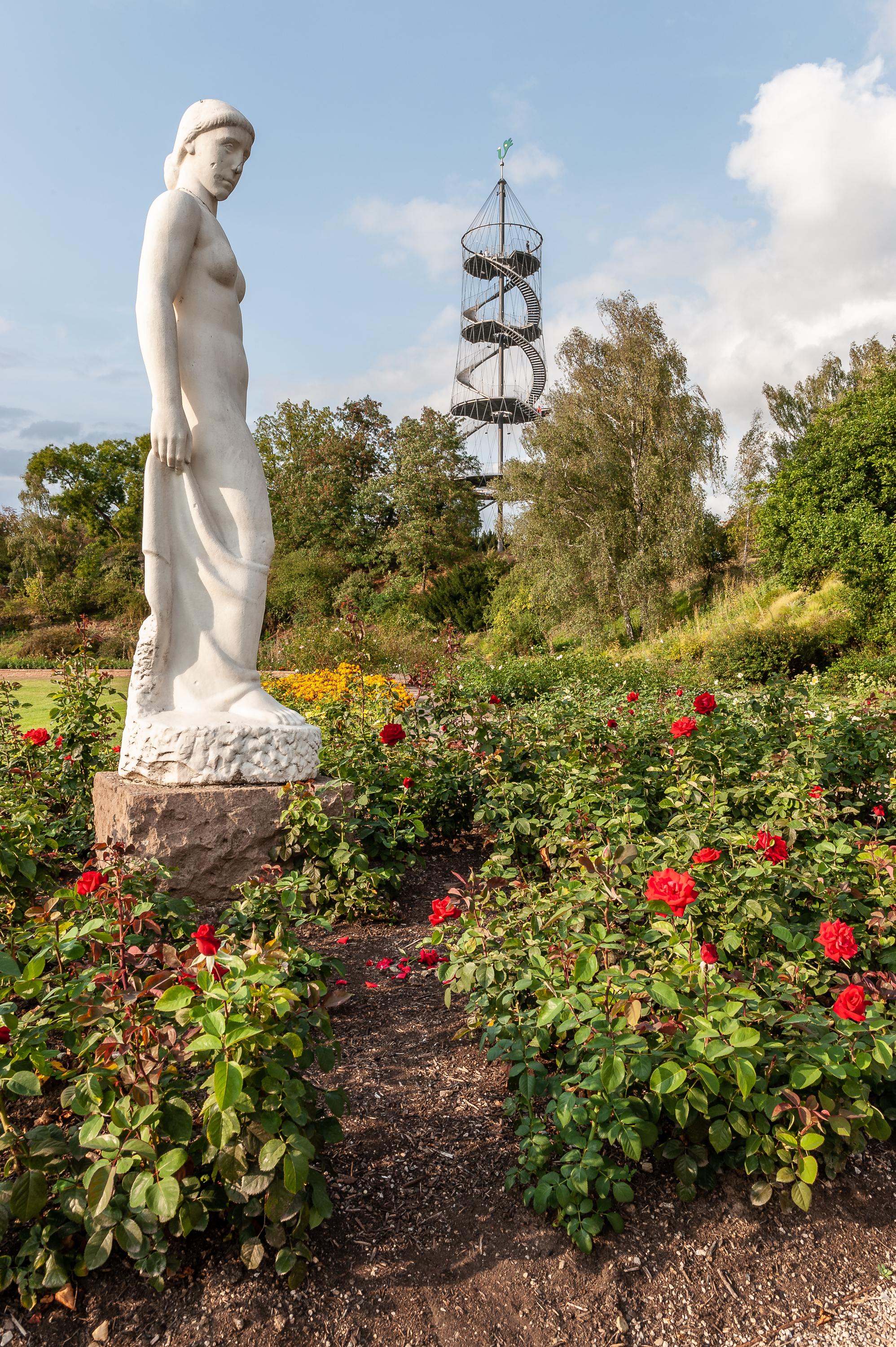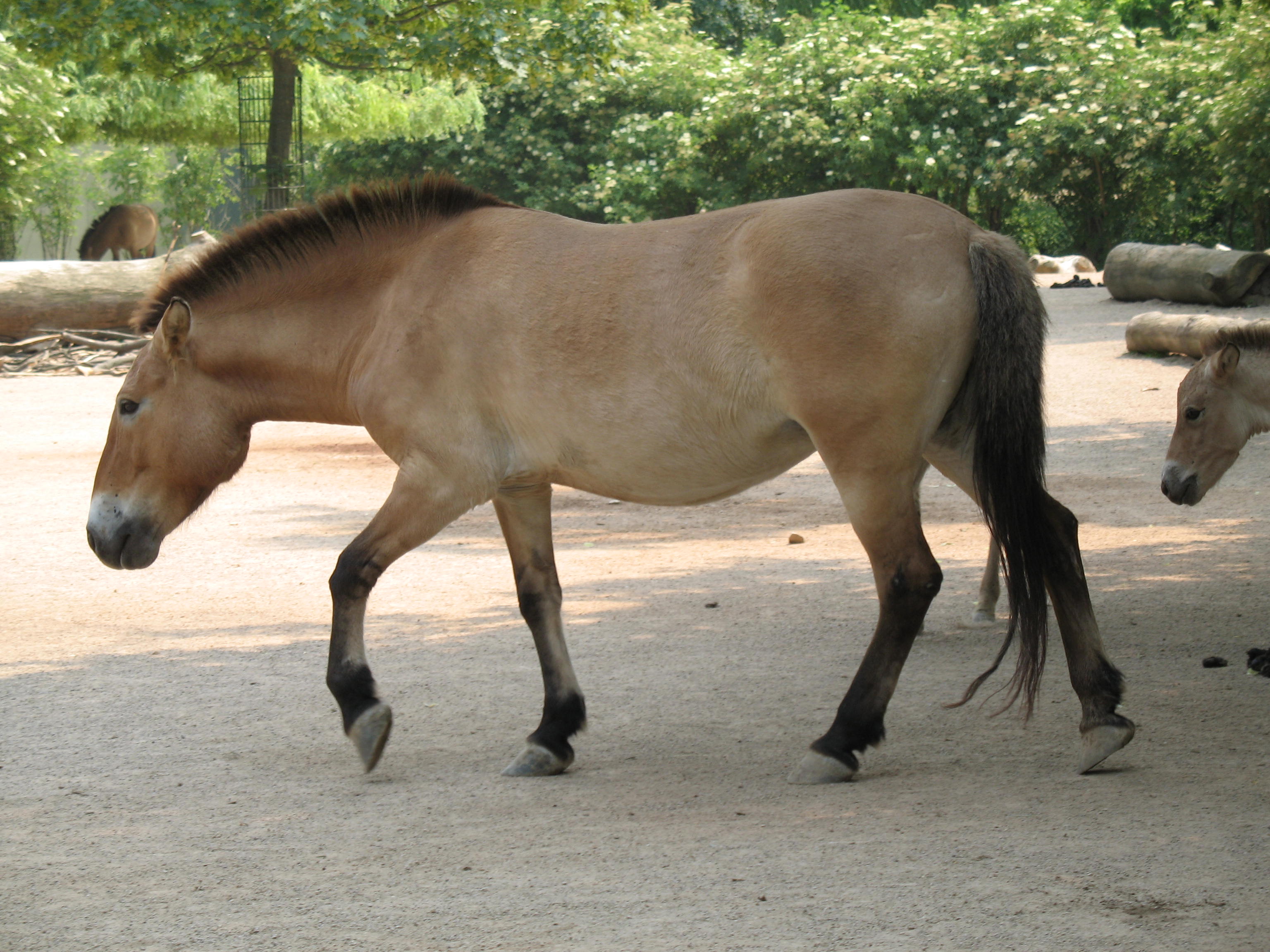|
Black Horse
Black is a hair coat color of horses in which the entire hair coat is black. It is not uncommon to mistake dark chestnuts or bays for black. Black horses have dark brown eyes, black skin, and wholly black hair coats without any areas of permanently reddish or brownish hair. They may have pink skin beneath any white markings under the areas of white hair, and if such white markings include one or both eyes, the eyes may be blue. Many black horses "sun bleach" with exposure to the elements and sweat, and therefore their coats may lose some of their rich black character and may even resemble bay or seal brown, though examination of the color of hair around the eyes, muzzle and genitals will determine color. Some breeds of horses, such as the Friesian horse, Murgese and Ariegeois (or Merens), are almost exclusively black. Black is also common in the Fell pony, Dales pony, Ostfriesen and Alt-Oldenburger, Kladruber, and Groningen. Visual identification When identifying t ... [...More Info...] [...Related Items...] OR: [Wikipedia] [Google] [Baidu] |
Melanocortin 1 Receptor
The melanocortin 1 receptor (MC1R), also known as melanocyte-stimulating hormone receptor (MSHR), melanin-activating peptide receptor, or melanotropin receptor, is a G protein–coupled receptor that binds to a class of pituitary peptide hormones known as the melanocortins, which include adrenocorticotropic hormone (ACTH) and the different forms of melanocyte-stimulating hormone (MSH). It is coupled to Gαs and upregulates levels of cAMP by activating adenylyl cyclase in cells expressing this receptor. It is normally expressed in skin and melanocytes, and to a lesser degree in periaqueductal gray matter, astrocytes and leukocytes. In skin cancer, MC1R is highly expressed in melanomas but not carcinomas. MC1R is one of the key proteins involved in regulating mammalian skin color and hair color. It is located on the plasma membrane of specialized cells known as melanocytes, which produce the pigment melanin through the process of melanogenesis. It controls the type o ... [...More Info...] [...Related Items...] OR: [Wikipedia] [Google] [Baidu] |
Smoky Black
Smoky black or black carrying cream is a equine coat color, coat color of horses which has the same phenotype as black (horse), black. Smoky black is produced by the action of a heterozygous (single copy) cream gene on an underlying black (horse), black coat color. Therefore, smoky black is a member of the Cream gene, cream family of coat color dilution gene, dilutions, and found in horse populations that have other cream-based colors such as palomino, Buckskin (horse), buckskin, cream gene, perlino, cream gene, cremello and smoky cream. All smoky blacks must have at least one parent with the cream gene, and a smoky black can only be verified through DNA testing or parentage. Smoky black has been mistaken for faded Black (horse), black, dark Bay (horse), bay or Seal brown (horse), brown, grullo or even liver Chestnut (coat), chestnut. A single copy of the cream gene can have a subtle effect on the colour of an otherwise black horse. However, this cannot be used to positively ident ... [...More Info...] [...Related Items...] OR: [Wikipedia] [Google] [Baidu] |
Morgan Horse
The Morgan horse is one of the earliest horse breeds developed in the United States. Tracing back to the foundation bloodstock, foundation sire Figure (horse), Figure, later named Justin Morgan after his best-known owner, Morgans served many roles in 19th-century American history, being used as coach horses and for harness racing, as general riding animals, and as cavalry horses during the American Civil War on both sides of the conflict. Morgans have influenced other major American breeds, including the American Quarter Horse, Tennessee Walking Horse and the Standardbred. During the 19th and 20th centuries, they were exported to other countries, including England, where a Morgan stallion influenced the breeding of the Hackney horse. In 1907, the US Department of Agriculture established the University of Vermont Morgan Horse Farm, US Morgan Horse Farm near Middlebury, Vermont for the purpose of perpetuating and improving the Morgan breed; the farm was later transferred to th ... [...More Info...] [...Related Items...] OR: [Wikipedia] [Google] [Baidu] |
Chestnut (coat)
Chestnut is a hair coat color of horses consisting of a reddish-to-brown coat with a mane and tail the same or lighter in color than the coat. Chestnut is characterized by the absolute absence of true black hairs. It is one of the most common horse coat colors, seen in almost every breed of horse. Chestnut is a very common coat color but the wide range of shades can cause confusion. The lightest chestnuts may be mistaken for palominos, while the darkest shades can be so dark they appear black. Chestnuts have dark brown eyes and black skin, and typically are some shade of red or reddish brown. The mane, tail, and legs may be lighter or darker than the body coat, but unlike the bay they are never truly black. Like any other color of horse, chestnuts may have pink skin with white hair where there are white markings, and if such white markings include one or both eyes, the eyes may be blue. Chestnut foals may be born with pinkish skin, which darkens shortly afterwards. Chest ... [...More Info...] [...Related Items...] OR: [Wikipedia] [Google] [Baidu] |
Killesberg Shetlandfohlen
The Killesbergpark (Höhenpark Killesberg) is an urban public park of half a square kilometre (123 acres) in Stuttgart, Germany. It is just north of the state capital, where Killesberg is a quarter of the borough of ''Stuttgart-Nord'' (North). The park dates back to the horticultural show of 1939. Before the show, a large area of the park had been a quarry. It was transformed into a park with exhibition sites for the show, and has remained, hosting horticultural events on a regular basis, including the “Bundesgartenschau” and the ''IGA'' (Internationale Gartenbauausstellung), both garden festivals. The Killesbergpark bordered for many years the city's fairgrounds. In 2007, Messe Stuttgart moved to new ground close to Stuttgart Airport. Every July the park hosts the popular Lichterfest Stuttgart. Thousands of lanterns are placed around the park, decorating the park for a variety of family activities throughout. After dark, there is a fireworks show accompanied by music. V ... [...More Info...] [...Related Items...] OR: [Wikipedia] [Google] [Baidu] |
Smoky Black
Smoky black or black carrying cream is a equine coat color, coat color of horses which has the same phenotype as black (horse), black. Smoky black is produced by the action of a heterozygous (single copy) cream gene on an underlying black (horse), black coat color. Therefore, smoky black is a member of the Cream gene, cream family of coat color dilution gene, dilutions, and found in horse populations that have other cream-based colors such as palomino, Buckskin (horse), buckskin, cream gene, perlino, cream gene, cremello and smoky cream. All smoky blacks must have at least one parent with the cream gene, and a smoky black can only be verified through DNA testing or parentage. Smoky black has been mistaken for faded Black (horse), black, dark Bay (horse), bay or Seal brown (horse), brown, grullo or even liver Chestnut (coat), chestnut. A single copy of the cream gene can have a subtle effect on the colour of an otherwise black horse. However, this cannot be used to positively ident ... [...More Info...] [...Related Items...] OR: [Wikipedia] [Google] [Baidu] |
Dales Pony Mare & Foal At The Dales Pony Society Breed Show
Dale, The Dale, Dales or The Dales may refer to: People and fictional characters * Dale (given name), a list of people and fictional characters with the given name or nickname * Dale (surname), a list of people and fictional characters * Dale Evans, stage name of American actress and singer born Frances Smith (1912–2001), wife of Roy Rogers * Dale Messick, pen name of Dalia Messick (1906-2005), ''Brenda Starr'' American comic strip artist * Dick Dale (1937-2019), Richard Anthony Monsour, American rock guitarist, ''"The King of the Surf Guitar"'' Places Terminology * Dale (landform), an open valley ** Dale (place name element) Norway * Dale, Fjaler, the administrative centre of Fjaler municipality, Vestland county * Dale, Sel, a village in Sel municipality in Innlandet county * Dale, Vaksdal, the administrative centre of Vaksdal municipality, Vestland county United Kingdom * Dale, Cumbria, England, a hamlet * Dale, Derbyshire, England, a village * Dale, Pembrokeshire, ... [...More Info...] [...Related Items...] OR: [Wikipedia] [Google] [Baidu] |
Lipizzan
The Lipizzan or Lipizzaner (, , , , , , ) is a European horse breed, breed of riding horse developed in the Habsburg Empire in the sixteenth century. It is of Baroque horse, Baroque type, and is powerful, slow to mature and long-lived; the coat is usually gray (horse), gray. The name of the breed derives from that of the village of Lipica, Sežana, Lipica (), which was part of the Habsburg empire at the time the breed was developed, now in Slovenia, one of the earliest stud farms established; the stud farm there is still active. The breed has been endangered numerous times by warfare sweeping Europe, including during the War of the First Coalition, World War I, and World War II. The rescue of the Lipizzans during World War II by American troops was made famous by the Disney movie ''Miracle of the White Stallions''. The Lipizzaner is closely associated with the Spanish Riding School of Vienna, Austria, where the horses demonstrate the ''Classical dressage#The school jumps, ha ... [...More Info...] [...Related Items...] OR: [Wikipedia] [Google] [Baidu] |
Gray (horse)
A gray horse (or grey horse) has a Equine coat color, coat color characterized by progressive depigmentation of the colored hairs of the coat. Most gray horses have black skin and dark eyes; unlike some equine dilution genes and some other genes that lead to depigmentation, gray does not affect skin or eye color. Gray horses may be born any base color, depending on other color genes present. White hairs begin to appear at or shortly after birth and become progressively more prevalent as the horse ages as white hairs become intermingled with hairs of other colors. Graying can occur at different rates—very quickly on one horse and very slowly on another. As adults, most gray horses eventually become completely white, though some retain intermixed light and dark hairs. The stages of graying vary widely. Some horses develop a wikt:dapple, dappled pattern for a period of time, others resemble a roan (horse), roan with more uniform intermixing of light and dark hairs. As they age, ... [...More Info...] [...Related Items...] OR: [Wikipedia] [Google] [Baidu] |
Grullo
Grullo (pronounced GREW-yo) or grulla is a color of horses in the dun family, characterized by tan-gray or mouse-colored hairs on the body, often with shoulder and dorsal stripes and black barring on the lower legs. The genotype for grulla horses is a black base with dun dilution. In this coloration, each individual hair is mouse-colored, unlike a roan, which is composed of a mixture of dark and light hairs. The several shades of grulla are informally referred to with a variety of terms, including black dun, blue dun, slate grulla, silver grulla or light grulla, silver dun, or lobo dun. Silver grulla may also refer to a grulla horse with silver dapple, regardless of shade. In terms of equine coat color genetics, all of these shades are based on the dun gene acting as a dilution gene over the black gene. Because the grulla color is not due to the gray gene, a grulla horse remains the same basic color from birth, though some minor shade variation may occur from summer to winte ... [...More Info...] [...Related Items...] OR: [Wikipedia] [Google] [Baidu] |
Primitive Markings
Primitive markings are a group of equine coat color, hair coat markings and qualities seen in several equine species, including horses, donkey, donkeys, and asses. In horses, they are associated with primitive breeds, though not limited to such breeds. The markings are particularly associated with the Dun gene, dun coat color family. All dun horses possess at least the Dorsal (anatomy), dorsal stripe, but the presence of the other primitive markings varies. Other common markings may include horizontal striping on the legs, transverse striping across the shoulders, and lighter guard hairs along the edges of a dark mane and tail. Origin The dun coat and attendant primitive or "dun factor" markings reflect the wild type coat and are observed in all Equus (genus), equine species. Some cave paintings depict horses as being dun and with the primitive markings. The Przewalski's horse is dun-colored with primitive markings. So, too, are horse breeds such as the Konik and the Heck hors ... [...More Info...] [...Related Items...] OR: [Wikipedia] [Google] [Baidu] |









